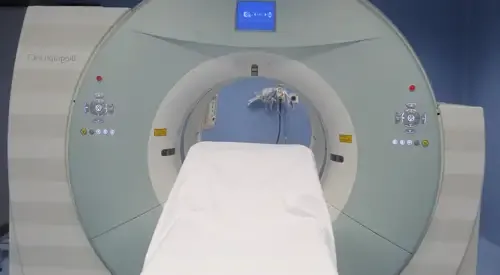Temporal arteritis or Horton's arteritis
"It is noteworthy the frequent association with polymyalgia rheumatica, as it appears in more than half of patients with this disease".
DR. ENRIQUE ORNILLA
SPECIALIST. RHEUMATOLOGY SERVICE

Temporal arteritis is a giant cell arteritis. This type of disease is characterized by the involvement of large and medium-sized arteries and by the formation of clusters of inflammatory cells (granulomas) in the injured vessels.
It is a granulomatous vasculitis that mainly affects one or several branches of the carotid arteries. Specifically, the temporal arteries, producing induration and thickening of the same. However, as it is a systemic disease, arteries can also be affected at other levels.

What are the symptoms of temporal or Horton's arteritis?
Like all systemic diseases, they can be accompanied by general symptoms such as asthenia, anorexia, fever, and weight loss.
The headache is the most frequent symptom, mainly when there is affectation of the temporary arteries.
The most serious symptom of the arteritis of giant cells is the loss of vision, that takes place by the affectation of the arteries that irrigate the optical nerve (optical neuritis).
Due to the vascular affectation of other locations, ischemic cardiopathy, cerebral vascular accidents, intermittent claudication, aortic aneurysms may appear...
What are the most common symptoms?
- Headache.
- Atypical pain at facial, occipital or cervical level.
- Fever.
- Asthenia.
- Loss of vision.
Do you have any of these symptoms?
You may have temporal arteritis or Horton's arteritis
What are the causes of Horton's arteritis?
As with all vasculitis, the causes are unknown. There seems to be a certain family aggregation, so there is probably a genetic predisposition to this disease.
On the other hand, cellular aging itself could also be involved in the development of this disease through stimulation of the immune system by the altered elastin.
What are the complications of Horton's arteritis?
Possible complications, especially if not treated properly or in a timely manner, may be:
- Damage to other blood vessels in the body.
- Development of aneurysms (ballooning out of blood vessels) in patients with giant cell arteritis
- Sudden vision loss or eye muscle weakness.
- Stroke or transient ischemic attack.
How is Horton's arteritis diagnosed?

As with other diseases of unknown cause, there are clinical criteria that support the diagnosis of Horton's arteritis.
In the case of temporal arteritis, at least the criteria of age greater than 55 years, evident clinical improvement in the first 48 hours of glucocorticoid treatment and duration of symptoms greater than 3 weeks must be met.
On physical examination, a decrease in palpation of the artery pulse is evident.
Analytically, the significant increase in sedimentation rate is very characteristic, often reaching values above 100 mm. in the first hour and accompanying the anemia.
How is Horton's or temporal arteritis treated?
The objective of the treatment is to control the evolution of the disease
Glucocorticoids are the treatment of choice in this disease. They are able to induce a rapid and remarkable clinical improvement, besides being able to decrease the risk of vascular complications that these patients present.
The duration of the treatment is prolonged, having to be maintained for a minimum of one or two years.
Where do we treat it?
IN NAVARRE AND MADRID
The Rheumatology Service
of the Clínica Universidad de Navarra
The Rheumatology Service has a multidisciplinary team highly specialized in the diagnosis and treatment of rheumatological diseases, from osteoarthritis, arthritis or osteoporosis to autoimmune or inflammatory diseases.
In addition, we have doctors specialized in assisting pregnant women with autoimmune diseases, in order to guarantee the maximum safety of the fetus.
Organized in specialized units
- Inflammatory arthropathies.
- Degenerative arthropathies.
- Microcrystalline arthropathies.
- Bone pathology.
- Systemic autoimmune diseases.
- Autoinflammatory diseases.

Why at the Clinica?
- Valoración integral del paciente.
- Diagnóstico personalizado.
- Tecnología de vanguardia.




